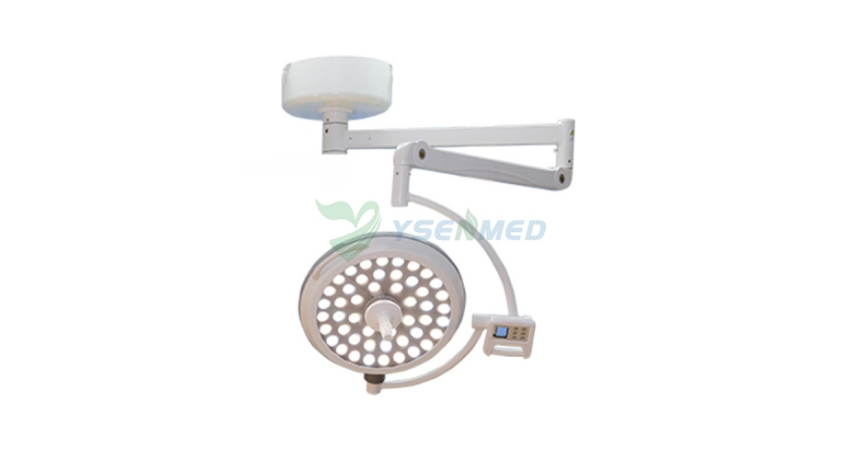Hot Products
YSX500D 50kW DR system set up and put into service in Cambodia.
YSENMED YSX500D 50kW digital x-ray system has been successfully set up and put into service in a hospital in Cambodia.
YSX056-PE serving as a vehicle-mounted x-ray in the Philippines
YSX056-PE 5.6kW portable x-ray unit has been adapted to fit on a truck, to provide mobile x-ray examination service for remote communities in the Philippines.
X Ray Machine To Zimbabwe
x ray machine, 50KW x ray machine
Microscope To Malawi
Achromatic objectives: 4X、10X、40X(S), 100X(S、Oil) Wide field eyepiece: WF10X(WF16X for option) Eyepiece head: Sliding binocular head inclined at 45° Stage: Double layer mechanical stage size 140X140mm, moving range 75X45mm Focusing: Coaxial coarse and
Are 3D Ultrasounds in Color? Exploring the Technology Behind 3D Imaging
Views : 2087
Update time : 2025-06-13 15:22:00
When it comes to prenatal imaging, 3D ultrasounds have become a popular choice for expectant parents. But have you ever wondered if these fascinating images are actually in color? In this article, we'll dive into the world of 3D ultrasounds, discussing what they are, how they work, and whether or not they can capture color. So, grab a cup of coffee, and let's explore this topic together!

- Color Doppler Ultrasound: This technique adds color to the images, but it's primarily used to visualize blood flow and other dynamic processes rather than to enhance the 3D images of the fetus itself.
What is a 3D Ultrasound?

Understanding Ultrasound Technology
Before we get into the specifics of 3D ultrasounds, let's clarify what ultrasound technology is. Ultrasound uses sound waves to create images of the inside of the body. It's commonly used during pregnancy to monitor the development of the fetus.The Evolution of Ultrasound Imaging
From the traditional 2D images we're familiar with to the more advanced 3D and even 4D images, ultrasound technology has come a long way. While 2D ultrasounds provide a flat image, 3D ultrasounds offer a more lifelike representation of the fetus, allowing parents to see their baby's features in greater detail.How Does 3D Ultrasound Work?
The Science Behind 3D Imaging
3D ultrasounds work by capturing multiple 2D images from different angles and then combining them to create a three-dimensional representation. This process involves sophisticated software that reconstructs the images into a 3D format.The Role of Sound Waves
Ultrasound machines emit high-frequency sound waves that bounce off the tissues and fluids in the body. The machine then captures these echoes to create an image. In the case of 3D ultrasounds, the machine captures numerous slices of images, which are then pieced together to form a comprehensive view.Are 3D Ultrasounds in Color?
The Color Aspect of Ultrasound Imaging
Now, let's get to the burning question: are 3D ultrasounds in color? The short answer is that traditional 3D ultrasounds are not in color. They typically produce grayscale images. However, there are advancements in technology that allow for color Doppler imaging, which is often used to assess blood flow.Grayscale vs. Color Images
- Grayscale Images: These are the standard images produced by most 3D ultrasound machines. They provide excellent detail of the fetus's structure, but everything appears in shades of gray.- Color Doppler Ultrasound: This technique adds color to the images, but it's primarily used to visualize blood flow and other dynamic processes rather than to enhance the 3D images of the fetus itself.
The Benefits of 3D Ultrasounds
Enhanced Visualization
One of the main advantages of 3D ultrasounds is the enhanced visualization of the fetus. Parents can see their baby's facial features and even some expressions, which can create a deeper emotional connection.Better Assessment of Anomalies
3D ultrasounds can help healthcare providers detect certain anomalies that might not be as easily identifiable in 2D images. This can lead to earlier interventions if necessary.Memorable Keepsakes
Many parents cherish the images produced by 3D ultrasounds. They often use these images to create keepsakes, such as framed photos or even 3D printed models of their baby.The Limitations of 3D Ultrasounds
Cost Considerations
One downside to 3D ultrasounds is the cost. They tend to be more expensive than traditional 2D ultrasounds, and not all insurance plans cover them.Availability and Accessibility
3D ultrasound technology may not be available in all healthcare facilities, especially in rural areas. This can limit access for some expectant parents.Image Quality Factors
The quality of 3D ultrasound images can be affected by several factors, including the position of the fetus, the amount of amniotic fluid, and the mother's body type. Sometimes, the images may not turn out as clear as expected.When Should You Consider a 3D Ultrasound?
Routine Checkups vs. Specialized Needs
3D ultrasounds are often used for routine checkups, but they can also be beneficial in certain situations. For example, if there are concerns about fetal development or if you'd like a more detailed look at your baby's anatomy, a 3D ultrasound might be recommended.Timing Matters
The best time to get a 3D ultrasound is typically between 26 and 32 weeks of pregnancy. At this stage, the fetus has developed enough fat to provide clearer images, and there's still enough amniotic fluid to ensure a good view.What to Expect During a 3D Ultrasound
The Procedure
During a 3D ultrasound, you'll lie on an exam table, and a gel will be applied to your abdomen to help the transducer make better contact. The technician will move the transducer around to capture images from various angles.The Experience
Many parents find the experience exciting and emotional. It's a unique opportunity to see their baby in a way that's not possible with traditional 2D ultrasounds. You may even get to hear your baby's heartbeat during the procedure!Conclusion
In conclusion, while traditional 3D ultrasounds are not in color, they provide stunning grayscale images that can enhance the prenatal experience for parents. The technology behind 3D ultrasounds continues to evolve, offering better visualization and the potential for detecting anomalies. If you're considering a 3D ultrasound, it's a fantastic way to connect with your baby before birth. Just remember to discuss your options with your healthcare provider to determine what's best for you and your little one!FAQ
What is the difference between a 2D ultrasound and a 3D ultrasound?
A 2D ultrasound produces flat, two-dimensional images of the fetus, primarily showing the outline and basic shapes of structures. In contrast, a 3D ultrasound captures multiple 2D images from various angles and combines them to create a three-dimensional representation, allowing for a more detailed and lifelike view of the fetus’s features.Are 3D ultrasounds safe for my baby?
Yes, 3D ultrasounds are considered safe for both the mother and the baby. They use sound waves, which do not involve radiation, making them a non-invasive imaging option. However, it’s always best to discuss any concerns with your healthcare provider to ensure that the procedure is appropriate for your specific situation.When is the best time to schedule a 3D ultrasound?
The optimal time for a 3D ultrasound is typically between 26 and 32 weeks of pregnancy. At this stage, the fetus has developed enough fat to provide clearer images, and there is usually sufficient amniotic fluid for a good view. Scheduling during this window can help ensure the best possible results.Will I be able to see my baby’s facial features in a 3D ultrasound?
Yes, one of the main advantages of a 3D ultrasound is the ability to see your baby’s facial features in detail. Many parents are excited to see their baby’s expressions, such as smiles or frowns, which can create a deeper emotional connection before birth.Can I choose which images I want to keep after the ultrasound?
Most facilities allow you to select your favorite images to keep. After the procedure, you can often receive digital copies or prints of the images, which you can share with family and friends. Be sure to ask your technician about the options available at your facility.
Related News
Read More >>
 What is the Digital Radiography System?
What is the Digital Radiography System?
Nov .09.2025
In this article, we'll dive deep into the world of digital radiography, exploring its components, advantages, and applications.
 How Do Surgical Lights Have No Shadows?
How Do Surgical Lights Have No Shadows?
Oct .29.2025
In this article, we'll dive deep into the science behind surgical lighting, explore its design, and understand why it's crucial for successful surgeries.
 Which is Better, an Oxygen Concentrator or a Ventilator?
Which is Better, an Oxygen Concentrator or a Ventilator?
Oct .26.2025
When it comes to respiratory support, two terms often pop up: oxygen concentrators and ventilators. But what do these devices do, and which one is better for your needs?
 Day 3 at WHX Nairobi 2025 (Medic East Africa)
Day 3 at WHX Nairobi 2025 (Medic East Africa)
Oct .25.2025
It's the final day here at the WHX Nairobi 2025.
We have spent 3 happy & fruitful days with many medical professionals and distributors from across the Kenya and neighbouring countries.
We have spent 3 happy & fruitful days with many medical professionals and distributors from across the Kenya and neighbouring countries.



